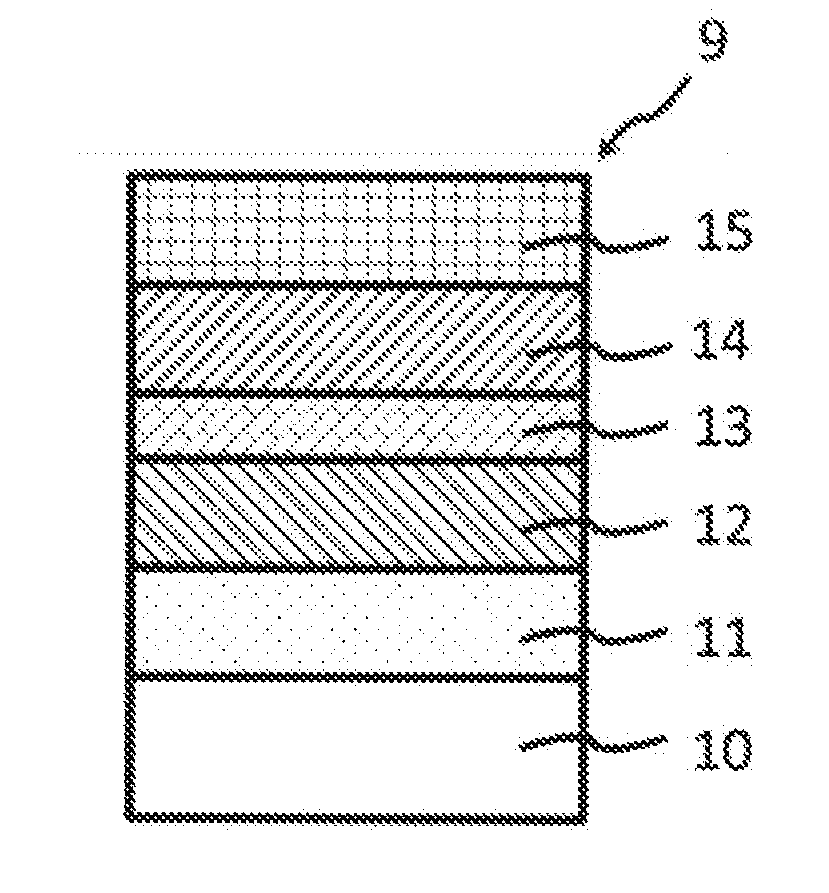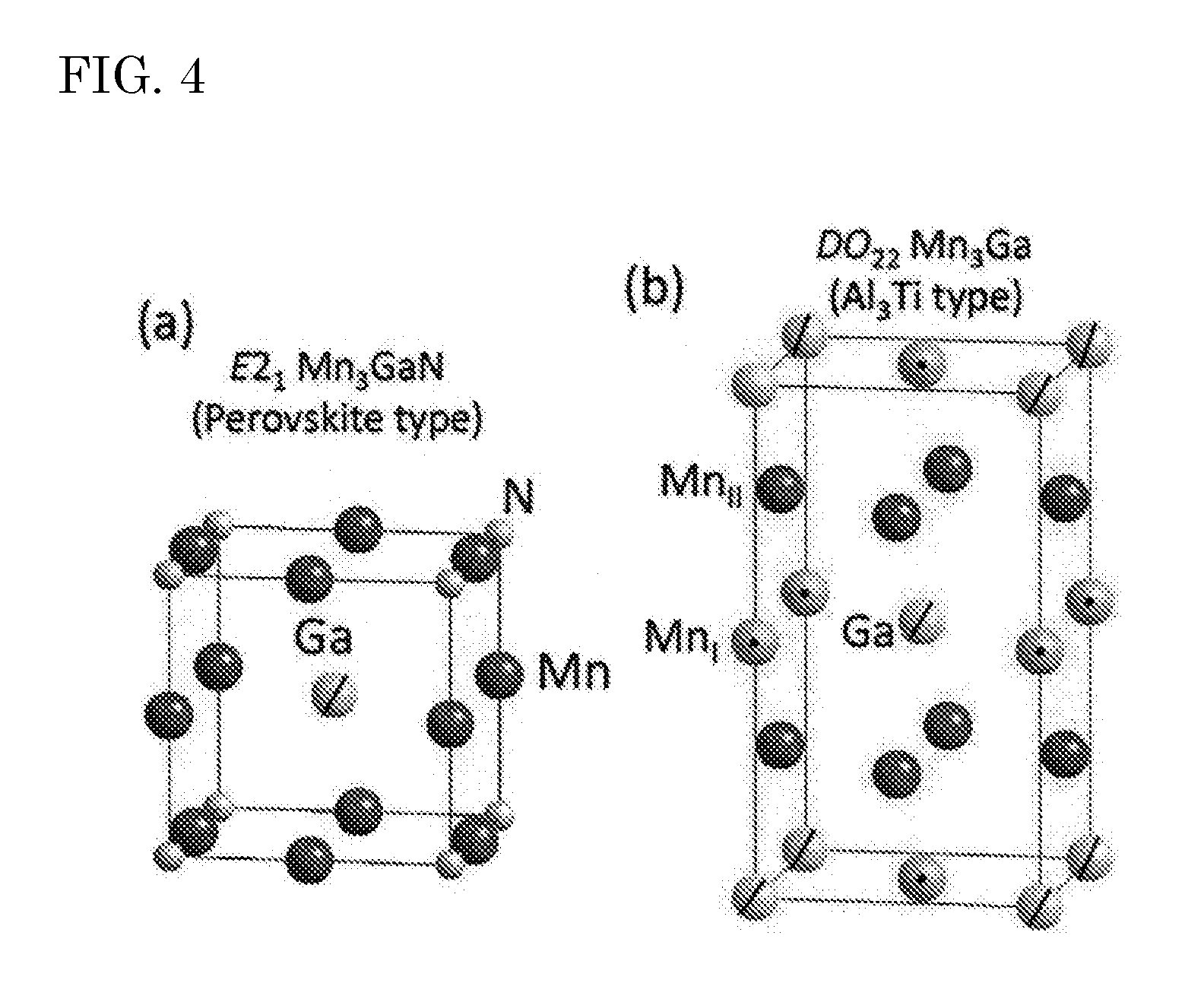Perpendicular magnetization film, perpendicular magnetization film structure, magnetoresistance element, and perpendicular magnetic recording medium
- Summary
- Abstract
- Description
- Claims
- Application Information
AI Technical Summary
Benefits of technology
Problems solved by technology
Method used
Image
Examples
example 1
Magnetic Properties
[0051]Magnetic properties of the Mn—Ga—N film which is fabricated on the MgO substrate according to the above-described (B) manufacturing method will be described. FIGS. 5(a), 5(b), and 5(c), illustrate magnetization curves of MnGa (N) films which are fabricated through a sputter method using MgO (001) as a substrate, a design thickness of 50 nm, a substrate temperature of Ts=580° C., and an Mn70Ga30 target in the structure of FIG. 1. In this case, In-plane and Perpendicular refer to what are measured when an external magnetic field μOH is applied respectively in an in-plane direction and a perpendicular direction of the films. FIGS. 5(a) and 5(b) illustrate examples in which an Mn—Ga—(—N) thin film is sputter-fabricated from the MnGa target respectively under conditions of a nitrogen gas ratio of 0% (there is no nitrogen introduction) and a nitrogen gas ratio of 1%. They correspond to magnetization curves of an Mn—Ga—(N) film alone, from which a background signal...
example 2
[0066]By using the same method as in Example 1, a thickness of the Mn—Ga—N thin film is changed. FIG. 14 show magnetization curves in a film perpendicular direction at room temperature in a case in which a substrate temperature Ts=580° C. and a nitrogen gas ratio of 1% are fixed, and a thickness of the Mn—Ga—N film is set to 5, 10, 20 and 50 nm. It can be seen that a perpendicular magnetization characteristic is acquired even when down to 5 nm, and saturation magnetization is maintained at a value of 80% as compared to a value of 50 nm. Therefore, the ferromagnetic Mn—Ga—N film can be made to be thinned and is suitable as a ferromagnetic layer of the perpendicular MTJ element.
example 3
[0067]As the structure of FIGS. 2 and 3, the Mn—Ga—N thin film is fabricated by using the same method as in Example 1 except that a Cr layer of 40 nm on an MgO substrate is used as a buffer layer. FIG. 15 shows magnetization curves in in-plane and perpendicular directions of the Mn—Ga—N film at room temperature, the Mn—Ga—N film having a thickness of 50 nm and being fabricated at a substrate temperature of Ts=480° C. and a nitrogen gas ratio of 1%. It is obvious from the magnetization curves that the perpendicular magnetization Mn—Ga—N film is acquired even in a case of using Cr as the buffer layer. Therefore, it is possible to use the metal Cr layer as a non-magnetic lower electrode of the Mn—Ga—N film, and to configure the MTJ element by using it.
PUM
 Login to View More
Login to View More Abstract
Description
Claims
Application Information
 Login to View More
Login to View More - R&D
- Intellectual Property
- Life Sciences
- Materials
- Tech Scout
- Unparalleled Data Quality
- Higher Quality Content
- 60% Fewer Hallucinations
Browse by: Latest US Patents, China's latest patents, Technical Efficacy Thesaurus, Application Domain, Technology Topic, Popular Technical Reports.
© 2025 PatSnap. All rights reserved.Legal|Privacy policy|Modern Slavery Act Transparency Statement|Sitemap|About US| Contact US: help@patsnap.com



